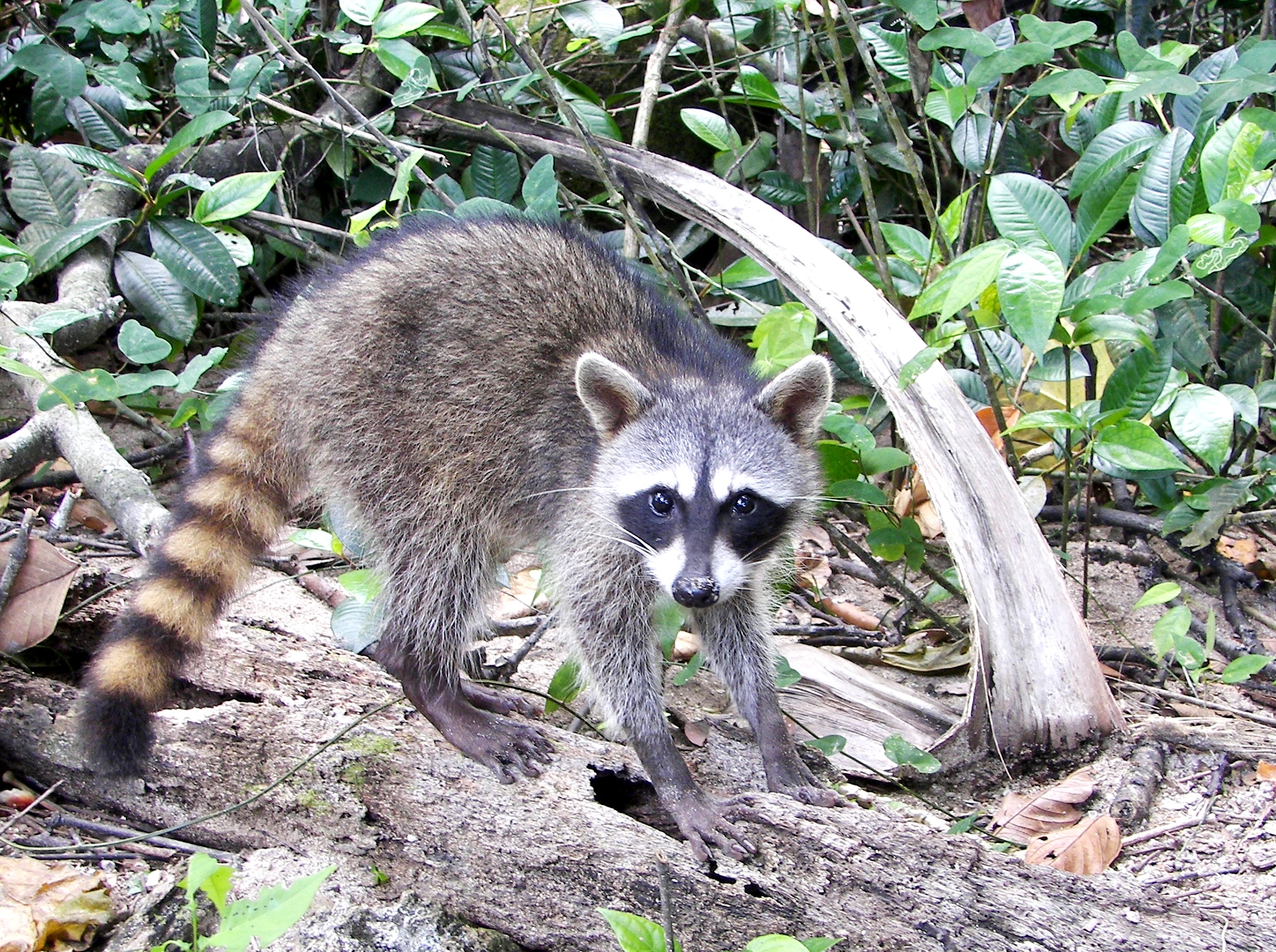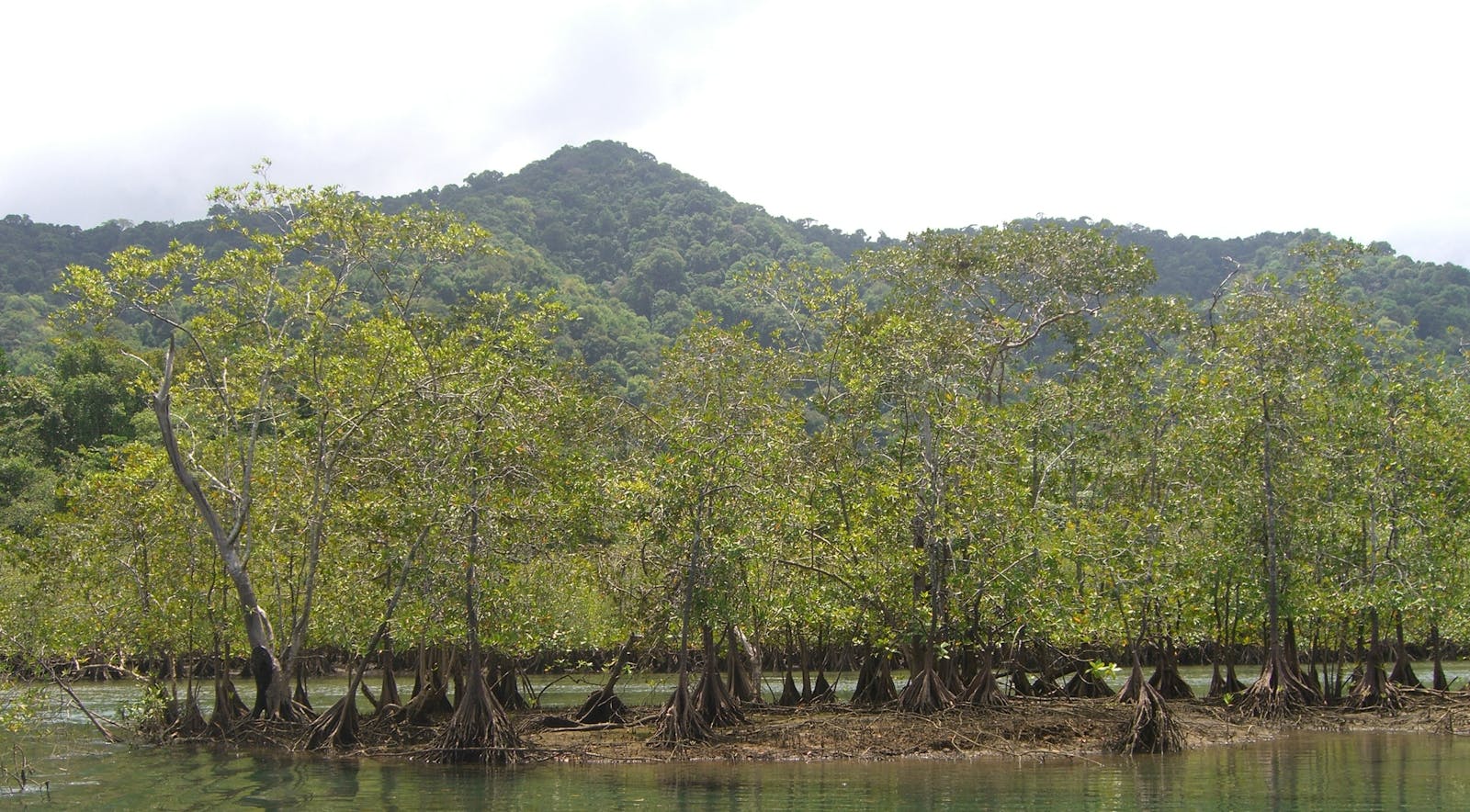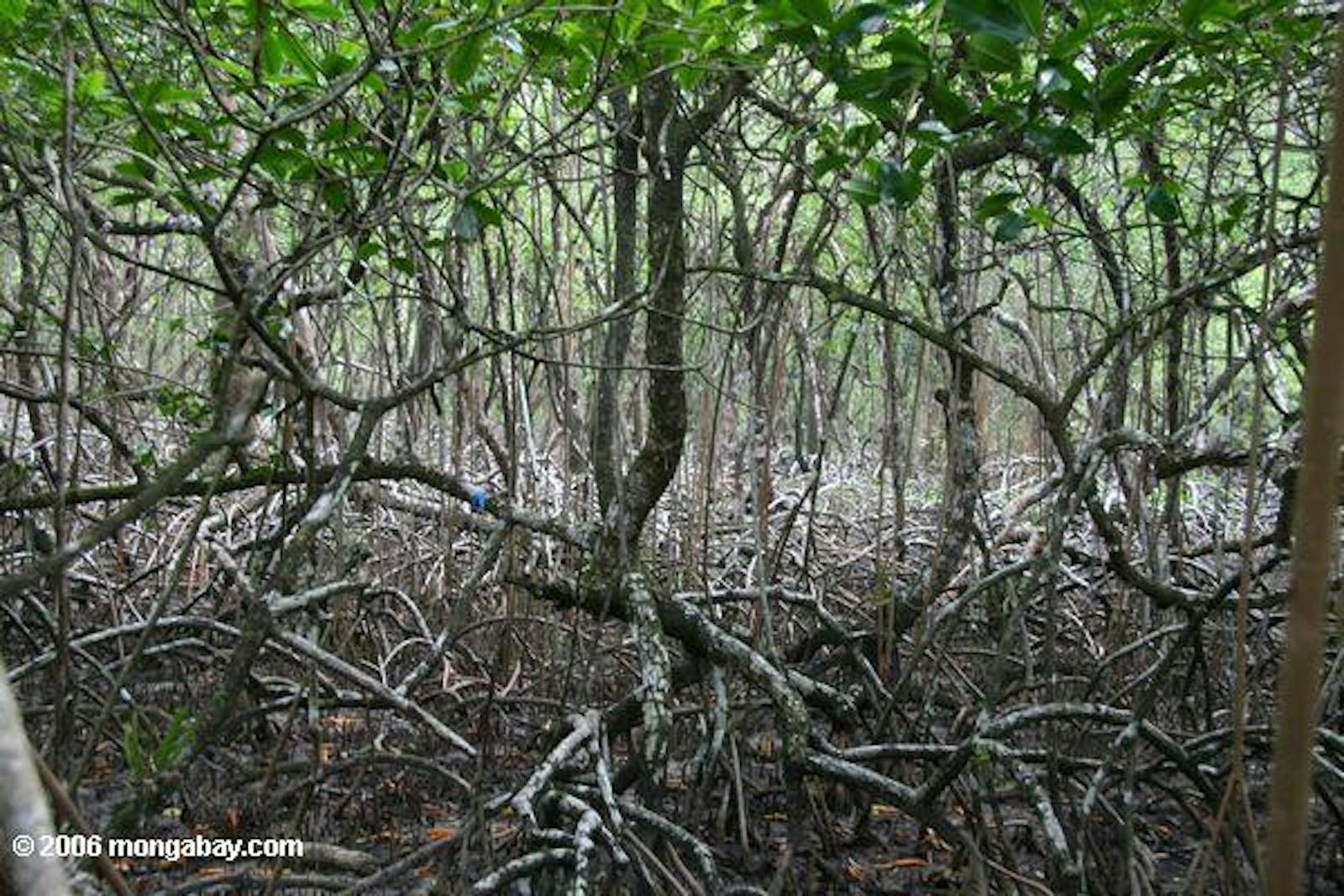South American Pacific Mangroves
The ecoregion’s land area is provided in units of 1,000 hectares. The conservation target is the Global Safety Net (GSN1) area for the given ecoregion. The protection level indicates the percentage of the GSN goal that is currently protected on a scale of 0-10. N/A means data is not available at this time.
Bioregion: Ecuadorean Dry Coastal Forests & Flooded Grasslands (NT10), Central American Isthmian & Colombian Coastal Forests (NT24)
Realm: Southern America
Ecoregion Size (1000 ha):
1,355
Ecoregion ID:
615
Conservation Target:
39%
Protection Level:
6
States: Ecuador, Colombia, Panama, Peru
The South American Pacific mangroves, an interface between ocean and the coastline, are prime habitat for crabs. The abundance of these crustaceans also makes the mangroves a tidal buffet for the crab-eating raccoon. The racoons have the best chance of success during low tide when there are few hiding places for the crabs. Crab-eating raccoons are different from their northern cousins by being more specialized on predating the abundant crustaceans along the coast. Still, they can be opportunists and will feed on many other resources they find in the mangrove habitats.
The South American Pacific Mangrove ecoregion is comprised of five subecoregions:
- The Gulf of Panama mangroves on the Pacific coast, from the Parita Bay to the San Miguel Gulf. Here, the annual average rainfall varies from 1,000 mm in the west to 3,000 mm in the east.
- Esmeraldes/Pacific Colombia mangroves along the Pacific Coasts of Colombia and northern Ecuador. The region generally has two large mangrove zones divided by Cabo Corrientes in Colombia. Toward the north there is strong low-intensity coastal current upwellings and a high annual rainfall between 4,000 and 8,000 mm.
- Manabi mangrove forests along the Ecuadorian Coast and at the mouths of river systems converging on the Pacific Coast. The two subregions of Manabi (Cojimíes and Chone) receive an annual rainfall average of 1,410 mm and 501 mm respectively.
- Gulf of Guayaquil/Tumbes mangrove forests bordering the Gulf of Guayaquil in Ecuador and the extreme northwestern Pacific Coast of Peru near Tumbes. The climate is semitropical with annual rainfall and from 100 to 300 mm and average temperature 25°C.
- Piúra mangroves located at the mouth of the Piúra River in the southernmost limit of the Pacific Coast mangroves in Peru. Annual rainfall and temperature are below 100mm and 24°C. The characteristic vegetation in this ecoregion is black, white, red, and tea mangrove. The species Mora oleifera is endemic to the Pacific coast within this ecoregion. The structure of the vegetation varies by environmental factors and location of the mangroves.

The flagship species of the South American Pacific Mangroves ecoregion is the crab-eating raccoon. Image credit: Creative Commons
The role of mangrove ecosystems as nurseries for fish, invertebrates, and crustaceans leads to higher levels of diversity, especially for water birds. Characteristic bird species in these mangroves include roseate spoonbill, gray-necked wood rail, mangrove black hawk, and rufous-browed peppershrike. Mammals such as Mexican anteater, white-throated capuchin, and crab-eating raccoon can be found in the mangroves.
In Esmeraldes/Pacific Colombia mangroves, the clam species Anadara tuberculosa is a valuable resource for local communities. The Manabi Mangroves are home to the critically endangered mangrove finch and is rich in fish in the genus Mugil as well as post-larva shrimp of the family Penaeidae. The Gulf of Guayaquil/Tumbes Mangrove is one of the few locations with the critically endangered white winged guan.
The Gulf of Panama mangroves have largely been reduced in the Chiriqui area on the Pacific Coast, chiefly to shrimp farming. Colombia has two Natural National Parks (Sanquianga and Ensenada de Utría) that protect the mangrove habitats and reduce the effects of human activities on the ecosystem. Three reserves have been established in northern Colombia as well, and there are ongoing efforts to establish more protected areas for mangroves.
In Manabí, the conservation status of the mangrove forests is critical. On the Ecuadorian coast there are only four protected areas covering marine and coastal environments, and they do not include the Manabí mangrove forests. Churute Mangroves Ecological Reserve in Ecuador is a State Park established to protect the Gulf of Guayaquil/Tumbes mangroves. Additionally, in Peru, there is the Tumbes Mangrove National Sanctuary.
These mangrove ecosystems are threatened by conversion to agricultural areas, urbanization, timber exploration, industrial pollution, and exploitation of fishing resources. The priority conservation actions for the next decade will be to: 1) protect and restore the Manabí mangrove forests; 2) restrict tourism, agriculture, and timber industry encroachment; and 3) educate local communities on mangrove biodiversity benefits.
Citations
1. Tognetti, S. Burdette, C. 2018. Central America: Pacific Coast of Panama https://www.worldwildlife.org/ecoregions/nt1414 Accessed August 7, 2018
2. Borda, C. 2018. Northern South America: Northern Colombia https://www.worldwildlife.org/ecoregions/nt1409 Accessed August 7, 2018
3. Carrera, P. Jiménez, P. Viteri, X. 2018. Northern South America: Coastal Ecuador https://www.worldwildlife.org/ecoregions/nt1418 Accessed August 7, 2018




